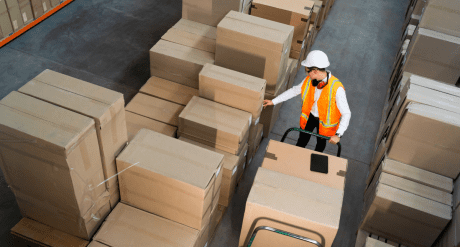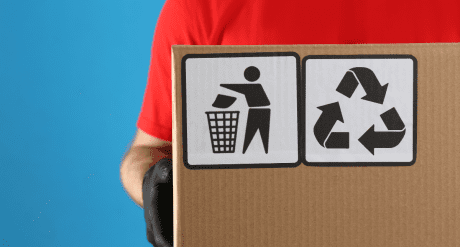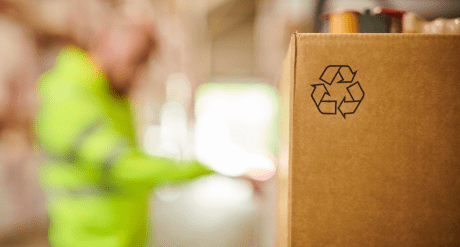
Ask Our Experts: Our Most Popular Questions on EU Packaging and Packaging Waste Regulation
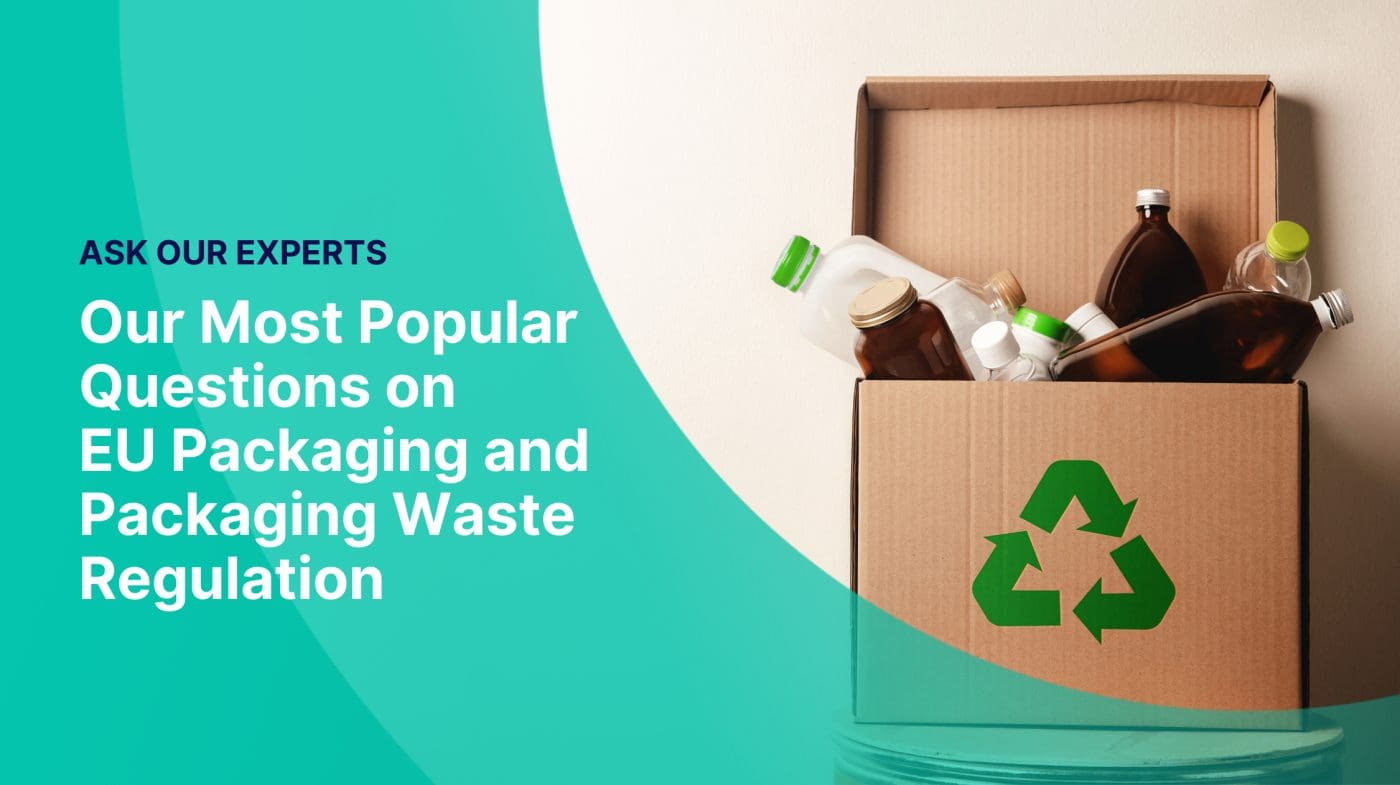
This blog was originally posted on 28th August, 2025. Further regulatory developments may have occurred after publication. To keep up-to-date with the latest compliance news, sign up to our newsletter.
The EU Packaging and Packaging Waste Regulation, which entered into force on 11 February 2025, will apply from 12 August 2026. This regulation introduces comprehensive new requirements for packaging, aiming to enhance sustainability and support circular economy goals, with a focus on reducing packaging waste across all Member States. Many are now asking critical questions regarding the scope, applicability and requirements of the Regulation.
This Q&A tackles recent customer inquiries head-on, delving into the specifics of navigating the EU Packaging and Packaging Waste Regulation. We explore crucial topics such as whether the Regulation will apply to UK based manufacturers and entities, the pictograms that will be required for use under the Regulation, whether returnable packaging is covered under the Regulation, date of application for obligations of operators, technical documentation and test reports for heavy metals.
Want to find out more about the EU Packaging and Packaging Waste Regulation? Check out our whitepaper Unpacking the New EU Packaging Regulation (PPWR): A Summary of Key Requirements.
Application of EU Packaging and Packaging Waste Regulation to UK Manufacturers and Entities
Will EU Packaging and Packaging Waste Regulation (EU) 2025/40 apply to UK based product manufacturers and entities, or will UK based businesses have any obligations under these EU regulations if placing products onto the EU Market, or sending articles to manufacturers within the EU?
Scope of Regulation
To answer this question, it is helpful to examine the scope of the Regulation. Article 2 states that “this Regulation applies to all packaging, regardless of the material used, and to all packaging waste, whether such packaging is used in or such packaging waste originates from industry, other manufacturing, retail or distribution, offices, services or households.” Article 4 then states that “packaging shall only be placed on the market if it complies with this Regulation.”
Relevance of the EU Packaging and Packaging Waste Regulation for UK Manufacturers
As the UK is no longer in the EU, this Regulation does not directly apply to UK based product manufacturers and entities. However, if manufacturers from the UK wish to place their products on the EU market, the Regulation is of significant importance as the packaging and/or packaged products will not be able to be placed on the EU market unless they comply with this Regulation.
Placing Products on the Market
It is worth noting that a product will not be considered to be placed on the market if it is:
- Introduced from the UK in the EU customs territory in transit, placed in free zones, warehouses, temporary storage or other special customs procedures; or
- In the stocks of the manufacturer (or the authorized representative established in the Union) or the importer, where the product is not yet made available, that is, when it is not being supplied for distribution, consumption or use, unless otherwise provided for in the applicable Union harmonization legislation.
For more on this, refer to the EU’s Blue Guide (see pages 21-23 in particular. Also, page 29 specifically deals with the consequences of the UK’s withdrawal from the EU).
Essentially, an economic operator in the EU who receives goods from the UK is now considered to be an importer under EU law (including the EU Packaging Regulation). According to Article 18 of the EU Packaging Regulation, the importer must ensure that imported packaging is in conformity with the requirements of the Regulation.
Pictograms Required For Use Under EU Packaging and Packaging Regulation
Which pictograms are going to be required for use? Will the Triman logo and EU Decision 97/129/EC material codes still be accepted?
Future Labeling Requirements Under the EU Packaging and Packaging Waste Regulation
Articles 12(6) and 12(7) of the EU Packaging and Packaging Waste Regulation (‘PPWR’) state that labelling requirements will be expanded upon by implementing acts which will be published by the Commission by 12 August 2026. We have no concrete information about the content of these implementing acts at this point.
However, the JRC Policy Lab under the EU Commission is currently engaging in workshops to help determine the design of labels under the PPWR. I understand that their work will continue into early-mid 2025. The following webpages may be helpful:
- https://publications.jrc.ec.europa.eu/repository/handle/JRC135860
- https://policy-lab.ec.europa.eu/news/harmonising-waste-sorting-labels-across-eu-2023-05-02_en
Triman Logo
One of the primary objectives of the PPWR is to harmonize packaging labelling across the EU. As the PPWR will be directly applicable in all member states, any national measures (such as the Triman logo) which are in conflict with it will be replaced by the EU measures. Once the implementing acts are published, it will be possible to determine the full extent to which national measures will be affected.
Indeed, Article 12(8) states that “economic operators shall not provide or display labels, marks, symbols or inscriptions that are likely to mislead or confuse consumers or other end users with respect to the sustainability requirements for packaging, other packaging characteristics or packaging waste management options for which harmonized labelling has been laid down in this Regulation.” This suggests that once harmonized labelling has been established by the implementing acts, then it is likely that national measures such as the Triman logo will no longer comply with the PPWR.
It is also important to note that an infringement procedure has been launched against France by the EU Commission for the use of the Triman logo so this reinforces the idea that this labelling requirement may be withdrawn or amended in the future. The latest update on this from last November may be viewed here.
Decision 97/129/EC
Decision 97/129EC is due to be repealed by the PPWR on 12 August 2028 (see Article 70(2). In paragraph 74 of the opening provisions of the PPWR, the Commission states that “in view of the new (labelling) system, Commission Decision 97/129/EC (34) should be repealed from 12 August 2028 and its content incorporated into the implementing act.”
Again, we will know more about whether the current material codes under Decision 97/129/EC will continue to be in use once the aforementioned implementing acts are published. From this paragraph, it appears that the Commission will seek to incorporate the current material codes into the new implementing act.
Conclusion
For now, these symbols and material codes will likely remain acceptable until the Commission publishes implementing acts which replace them. We will publish updates in C2P as soon as we have more detailed information regarding the implementing acts.
Returnable Packaging
Are returnable packaging covered by the PPWR (EU Packaging and Packaging Waste Regulation)?
Re-use
There is no specific mention of ‘returnable packaging’ but there are provisions which govern ‘re-use’ and ‘reusable packaging’ within the PPWR. Firstly, ‘re-use’ is defined as any operation by which reusable packaging is used again multiple times for the same purpose for which it was conceived.
Re-use System
Secondly, a ‘re-use system’ is defined as the organizational, technical or financial arrangements, together with incentives, that allow re-use either in a closed loop or open loop system, such as a deposit and return system that ensures that packaging is collected for re-use.
Reusable Packaging
Thirdly, reusable packaging is dealt with under Article 11. This states that packaging placed on the market from 11 February 2025 shall be considered to be reusable where it fulfils all of the following requirements:
- It has been conceived, designed and placed on the market with the objective to be re-used multiple times;
- It has been conceived and designed to accomplish as many rotations as possible under normally predictable conditions of use;
- It fulfils applicable requirements regarding consumer health, safety and hygiene;
- It can be emptied or unloaded without being damaged in a way that would prevent its further function and re-use;
- It is capable of being emptied, unloaded, refilled or reloaded while maintaining the quality and safety of the packaged product and ensuring compliance with the applicable safety and hygiene requirements, including those on food safety;
- It is capable of being reconditioned in accordance with Part B of Annex VI, while maintaining its ability to perform its intended function;
- It allows for affixing of labels and the provision of information on the properties of that product and on the packaging itself, including any relevant instructions and information for ensuring safety, adequate use, traceability and shelf-life of the product;
- It can be emptied, unloaded, refilled or reloaded without risk to the health and safety of those responsible for doing so; and
- It fulfils the requirements specific to recyclable packaging set out in Article 6, so that it can be recycled when it becomes waste.
Applicable Articles Relating to Reusable Packaging and Re-use Systems
Different parts of the PPWR apply to reusable packaging and re-use systems. These include:
- Article 12(2) requires labelling on reusable packaging to indicate that the packaging is reusable. This should apply from 12 February 2029.
- Article 26 states that economic operators who make reusable packaging available on the territory of a Member State for the first time shall ensure that a system is in place in that Member State for the re-use of that packaging which includes an incentive to ensure the collection of that packaging and which meets the requirements laid down in Annex VI.
- Article 27 states that economic operators that make use of reusable packaging shall participate in one or more re-use systems and shall ensure that the re-use systems within which the reusable packaging can be re-used comply with the requirements laid down in Part A of Annex VI. Furthermore, economic operators that make use of reusable packaging shall ensure that such packaging is reconditioned in accordance with Part B of Annex VI prior to offering it again for use by end users.
- Article 29 contains numerous provisions relating to re-use targets.
Requirements for Re-use Systems
Annex VI also includes requirements for re-use systems, including closed-loop systems (which may be applicable to your case). Annex VI, Part A(2) states that closed loop systems shall satisfy the following requirements:
- The system has reverse logistics facilitating transfer of the packaging from the end users back to the system participants;
- The system ensures the collection, reconditioning and redistribution of packaging;
- System participants are obliged to take the packaging back from the collection point if it has been used, collected and stored in accordance with the system rules.
Date of Application for Obligations of Operators
Please provide information on Obligations of operators in August 2026. Are the following articles required that must be addressed after August 12, 2026?
・Article 5: Restrictions on hazardous substances (four heavy metal restrictions, technical documentation, and preparation of an EU Declaration of Conformity);
・Article 15: Obligations of manufacturers;
・Article 18: Obligations of importers; and
・Article 39: EU Declaration of Conformity.
Restrictions on Hazardous Substances
From 12 August 2026, the sum of the concentrations of lead, cadmium, mercury and hexavalent chromium resulting from substances present in packaging or packaging components shall not exceed 100 mg/kg. However, it is important to note that the current Packaging Directive already requires the sum of concentration levels of lead, cadmium, mercury and hexavalent chromium preset in packaging or packaging components to not exceed 100 ppm by weight.
Application of Regulation for Operators
Additionally, all aspects of the Regulation will apply from 12 August 2026, with the exception of Article 67(5) which applies from 12 February 2029.
Technical Documentation
Please provide information on Technical Documentation. For which packaging units is technical documentation required? For example, if plastic bottles are packaged in cardboard boxes, is separate technical documentation required for plastic bottles and the cardboard boxes? Is there a set method for creating technical documentation? Are there any standards or specifications that can be referenced that are already in effect? Or will they be issued in the future?
Scope of Application
The requirements of this Regulation apply to ‘all packaging’ placed on the market in the Union and to all packaging waste, regardless of the type of packaging or the material used i.e., sales packaging/primary packaging, grouped packaging/secondary packaging and transport packaging/tertiary packaging.
Certain Packages Not Considered Packaging
However, there are situations where certain packages are not considered ‘packaging’ under the Regulation, for instance cups, food containers, sandwich bags or other items which can perform a packaging function, are not considered packaging when they are designed and intended to be sold empty by the final distributor. Such items should only be considered to be packaging where they are designed and intended to be filled at the point of sale, in which case they should be considered to be ‘service packaging’, or sold by the final distributor containing food and beverages, provided that they perform a packaging function.
Adoption of Implementing Acts
By 31 December 2026, the Commission shall adopt implementing acts establishing the format for the technical documentation.
Test Reports of Heavy Metals
Under the EU Packaging and Packaging Waste Regulation, is it mandatory to include the test reports of heavy metals content in the DoC?
Requirement Regarding Test Reports for Heavy Metals
Based on Article 39, and Annex VII, a test report on heavy metals content in packaging is required when completing the DoC as part of the conformity assessment.
Article 39 specifies that the DoC shall contain the elements set out in Annex VII. This annex outlines the overall conformity assessment procedure and includes the following elements:
- Technical documentation (including test reports);
- Details regarding internal production control, and manufacturing processes.
Annex VII, subsection 4, also details that the DoC shall be kept together with the technical documentation.
Therefore, the DoC shall contain details relating to technical documentation in order to demonstrate adherence to Articles 5 to 12 (i.e. test reports on heavy metals content).
Want to learn more about Packaging Labeling Legislation in Europe? Download our free whitepaper!
Stay Ahead Of Regulatory Changes in EU Packaging and Packaging Waste Regulation
Want to stay ahead of regulatory developments in EU Packaging and Packaging Waste Regulation?
Accelerate your ability to achieve, maintain & expand market access for all products in global markets with C2P – your key to unlocking market access, trusted by more than 300 of the world’s leading brands.
C2P is an enterprise SaaS platform providing everything you need in one place to achieve your business objectives by proving compliance in over 195 countries.
C2P is purpose-built to be tailored to your specific needs with comprehensive capabilities that enable enterprise-wide management of regulations, standards, requirements and evidence.
Add-on packages help accelerate market access through use-case-specific solutions, global regulatory content, a global team of subject matter experts and professional services.
- Accelerate time-to-market for products
- Reduce non-compliance risks that impact your ability to meet business goals and cause reputational damage
- Enable business continuity by digitizing your compliance process and building corporate memory
- Improve efficiency and enable your team to focus on business critical initiatives rather than manual tasks
- Save time with access to Compliance & Risks’ extensive Knowledge Partner network
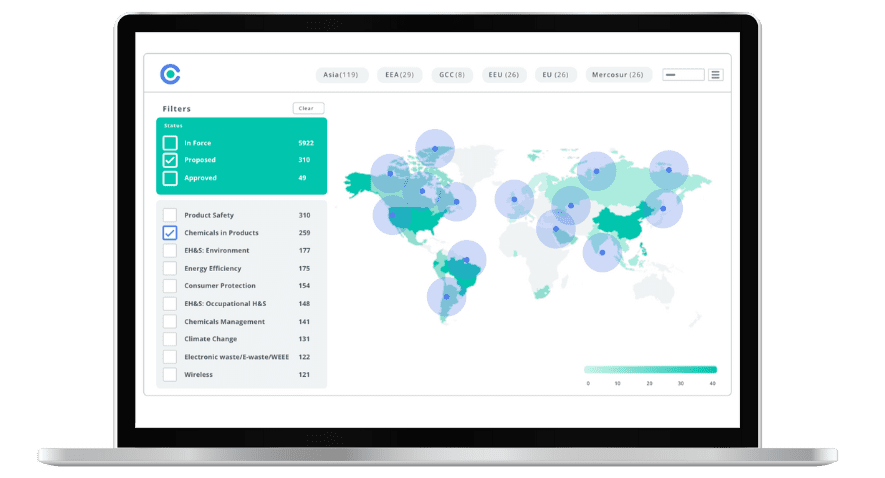
Global Packaging EPR Reporting Requirements: A Practical Comparison Guide
This whitepaper clarifies current packaging EPR reporting requirements for producers, offering an overview across various regions and countries.

